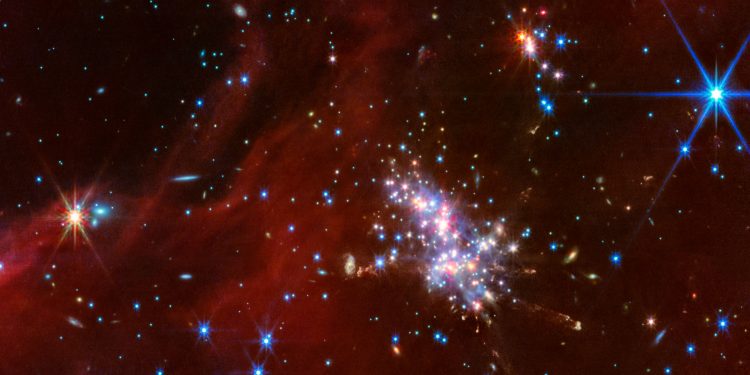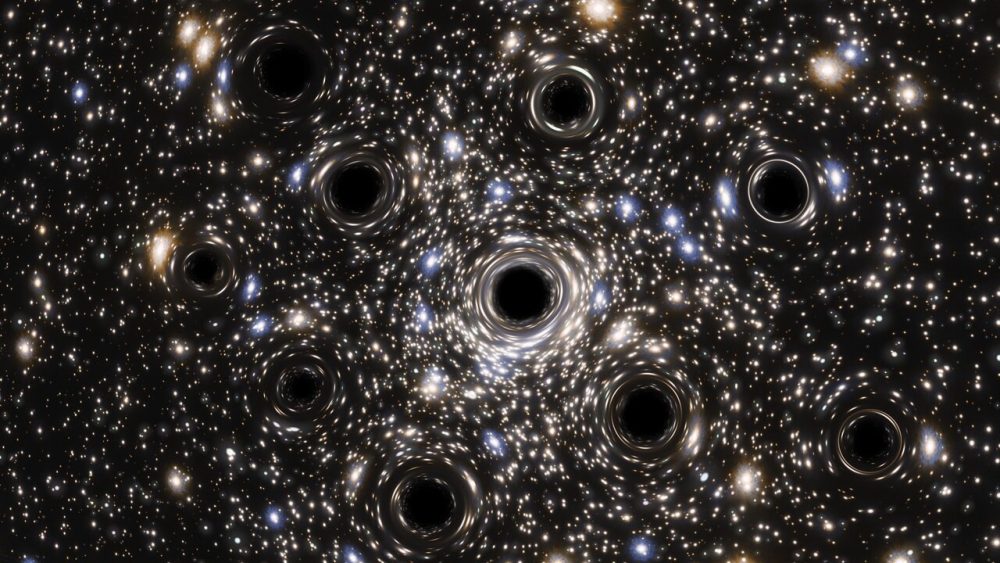In an ambitious effort to push the boundaries of space exploration, astronomers have directed NASA’s James Webb Space Telescope (JWST) to peer into the Extreme Outer Galaxy. This remote region lies over 58,000 light-years away from the Galactic Center—far beyond our solar system’s neighborhood, which sits approximately 26,000 light-years from the center of the Milky Way.
Utilizing Webb’s advanced instruments, such as the Near-Infrared Camera (NIRCam) and the Mid-Infrared Instrument (MIRI), scientists were able to image specific areas within two molecular clouds—Digel Clouds 1 and 2. These clouds serve as active sites of star formation, where new clusters of stars are born amidst bursts of activity. The resolution and sensitivity of Webb’s instruments have provided astronomers with unprecedented detail, allowing them to detect features such as young protostars, jets of material, and intricate nebular structures.
These findings have been published in the Astronomical Journal, marking a significant step forward in our understanding of star formation in the outer regions of the Milky Way. The data, obtained from time allocated to Mike Ressler of NASA’s Jet Propulsion Laboratory, opens the door to studying distant star-forming regions with the same precision once reserved for our immediate stellar neighborhood.
Natsuko Izumi from Gifu University and the National Astronomical Observatory of Japan, who led the research, expressed her excitement, saying, “In the past, we knew these regions existed, but we couldn’t explore their properties in depth. Now, with Webb, we’re able to capture stunning images and gather invaluable data that were previously out of reach.” This data builds upon previous observations from other telescopes, but Webb’s capabilities have transformed our understanding, particularly regarding the unexpectedly active star formation in Digel Cloud 2.
Stars in the Making: A Galactic Nursery
Although the Digel Clouds reside within the Milky Way, their composition closely mirrors that of ancient galaxies. Rich in hydrogen and helium but poor in heavier elements, these clouds resemble the galaxy’s makeup in its formative years. The research team seized this opportunity to explore four clusters of young stars—1A, 1B, 2N, and 2S—within Digel Clouds 1 and 2, offering a rare glimpse into how stars are born in such environments.
One of the most striking revelations came from Cloud 2S, where Webb identified a dense cluster of newly formed stars. Here, several stars were found ejecting material along their poles, producing dramatic jets visible in multiple directions. “The sight was astonishing, almost like a cosmic firecracker,” said Ressler. “You could see these jets shooting out in every direction from the central cluster.”
In addition to this cosmic display, Webb’s imagery confirmed the presence of a previously suspected sub-cluster within Cloud 2S, offering further insights into the complex process of star formation.
The Ongoing Saga of Star Formation
This groundbreaking data is only the beginning for researchers exploring the Extreme Outer Galaxy. The team plans to revisit these regions with Webb, seeking answers to questions about the relative abundance of stars of various masses in these distant star clusters. By studying such environments, astronomers hope to gain a deeper understanding of how stellar environments influence star formation processes.
One area of particular interest is the investigation of circumstellar disks, which are known to have shorter lifespans in distant star-forming regions. “Understanding why these disks dissipate more quickly compared to those in nearby regions could offer key insights into the evolution of planetary systems,” Izumi remarked.
Moreover, the team is eager to analyze the kinematics of the jets discovered in Cloud 2S, as their movements could reveal critical information about the early stages of star formation.
While the process of star birth remains shrouded in mystery, Webb is helping astronomers piece together the puzzle, one discovery at a time. As this research progresses, it could fundamentally alter our understanding of the formation and evolution of galaxies, as well as offer new perspectives on the history of our own Milky Way.











